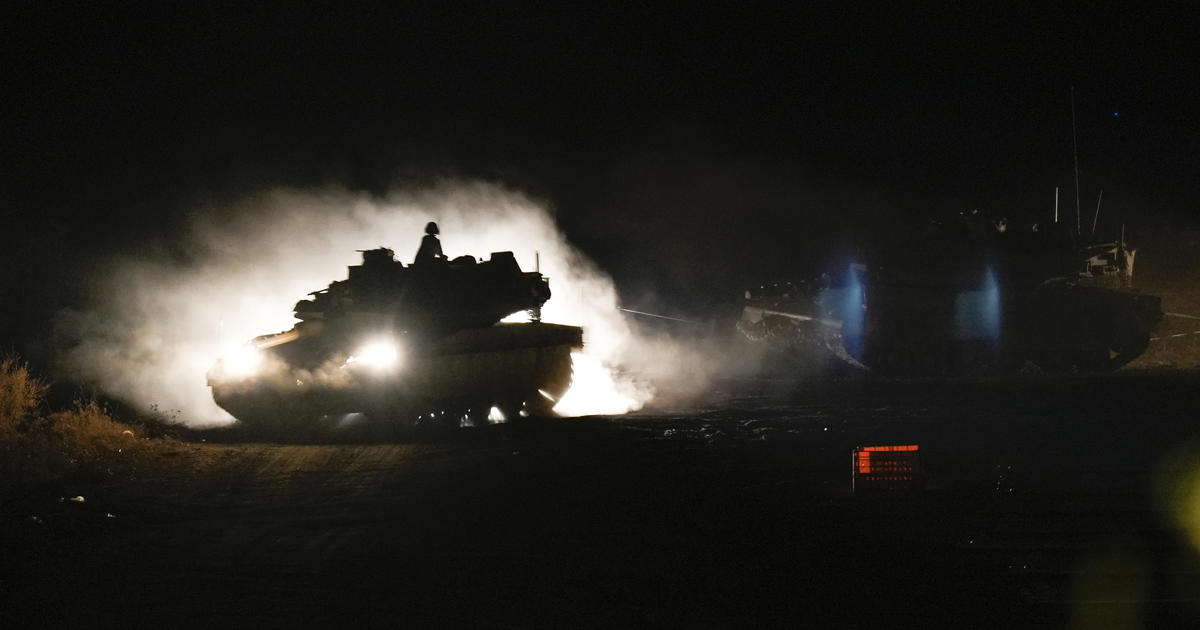The Israeli Defense Forces (IDF) initiated a limited ground operation targeting Hezbollah infrastructure and operatives in southern Lebanon. This action, described as “localized and targeted,” follows days of intense Israeli airstrikes across Lebanon, escalating the already volatile conflict between Israel and Hezbollah. The ground incursion represents a significant escalation, marking a new and potentially risky phase in the ongoing conflict and raising the stakes considerably in the wider regional struggle. This operation, coupled with the ongoing conflict in Gaza, highlights the complex dynamics and potential for wider conflict in the Middle East.
The Israeli Ground Operation in Lebanon
The Nature of the Operation
The IDF characterized its ground operation as “limited, localized, and targeted,” focusing on Hezbollah targets near the border posing an immediate threat to Israeli communities. The operation was reportedly planned months in advance and undertaken after approval from Israeli political leadership. The military emphasized that the ground raids were based on precise intelligence gathering, suggesting a level of preparedness and specific targeting of key infrastructure and personnel. While the IDF claims the operation is limited, its impact on the broader conflict remains to be seen. The operation includes supporting ground forces with air strikes and artillery fire further escalating military engagement. The fact that it occurred in parallel with military actions in other regions like Gaza showcases the multi-faceted nature of Israel’s ongoing conflict with various groups in the region.
Context and Escalation
This ground operation comes after a period of intense Israeli airstrikes across Lebanon as part of Operation Northern Arrows, conducted alongside airstrikes on targets far beyond Lebanon, including in Yemen. These actions escalated concerns about a regional conflict. The timing, in the wake of significant losses among Hezbollah’s leadership following airstrikes in Beirut, appears to suggest Israel aims to inflict a decisive blow, or at the very least capitalize on their recent successes in weakening Hezbollah’s capacity to retaliate. The fact that the US government was informed before the commencement of the operations also indicates that the decision to engage in military operations of this kind in Lebanon was not impulsive but rather something calculated, carefully considered, and strategically preplanned.
Hezbollah’s Response and Regional Implications
Hezbollah’s Reaction
Hezbollah, despite the recent losses of its leadership, has vowed to continue fighting, affirming that replacements for those killed are already in place. Their acting leader, Naim Kassem, acknowledged the ground operation but signaled preparedness for continued resistance. While immediate large-scale clashes between Israeli troops and Hezbollah fighters have not yet been reported, the situation is tense. The potential for heavy fighting exists given Hezbollah’s substantial military capabilities and resources. The preparedness of Hezbollah for the Israeli ground forces underscores the long and complex conflict these two sides have been engaging in for many years.
Potential for Wider Conflict
The Israeli ground incursion significantly raises the risk of wider conflict, especially with the already tense situation between Israel and various actors in the region. This risk includes a broadening of conflict to incorporate Iran and potentially other parties and actors across the region. The expanded scope of Israel’s air campaign – targeting groups in distant locations like Yemen – suggests a broader strategy than simply reacting to immediate threats from Lebanon. The high stakes nature of the conflict has the potential for significantly wider ramifications regionally, even influencing the overall geopolitics of the area, if and when external intervention arises. The potential for miscalculation, especially with increased military activity, must not be overlooked when discussing potential ramifications.
The Humanitarian Situation in Lebanon
Civilian Casualties and Displacement
The conflict has already resulted in a high number of civilian casualties, particularly among women and children, mostly due to heavy airstrikes throughout various locations in Lebanon. As the ground operation adds another dimension to the conflict, concerns for civilian safety grow. Displacement of Lebanese people, which was already significant before the invasion, will only be compounded with additional hostilities, including ground operations in specific locations within Lebanon’s civilian infrastructure. Furthermore, if fighting expands, humanitarian consequences may significantly increase.
The Long-Term Outlook
The Israeli ground operation signals a potentially decisive phase in the ongoing conflict, one where the ramifications of a full-blown war can only increase. Though the operation’s current scale is ‘limited’ according to the IDF, escalation always remains a possibility and should not be discounted. Both sides are well prepared for potential full-scale conflict, and while each have experienced battlefield losses and tactical victories, a stalemate remains a clear possibility.
Takeaway Points
- Israel has launched a limited ground operation in southern Lebanon targeting Hezbollah.
- This operation follows extensive Israeli airstrikes and represents a significant escalation of the conflict.
- Hezbollah has vowed to continue fighting despite recent losses of leadership.
- The ground operation heightens the risk of wider regional conflict, especially with increased risks for civilian casualties in Lebanon.
- The humanitarian situation in Lebanon is likely to worsen as the conflict escalates.




